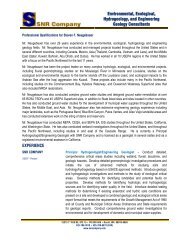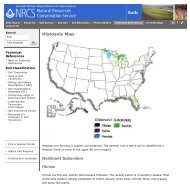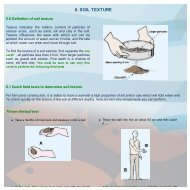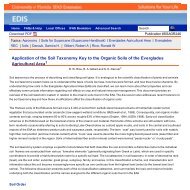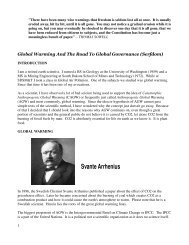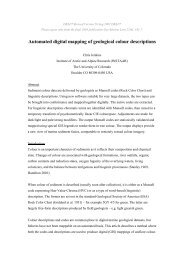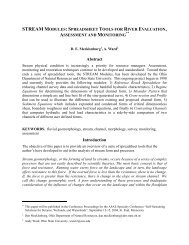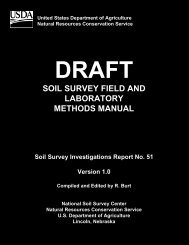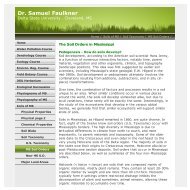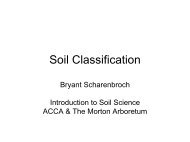chapter 3 fundamentals of fluvial geomorphology and stream ...
chapter 3 fundamentals of fluvial geomorphology and stream ...
chapter 3 fundamentals of fluvial geomorphology and stream ...
Create successful ePaper yourself
Turn your PDF publications into a flip-book with our unique Google optimized e-Paper software.
11 6 112 7 213 8 314 9410 5Figure 3.14 – ChannelClassification Based on Pattern<strong>and</strong> Type <strong>of</strong> Sediment Load(after Schumm 1981)Knighton (1998) related Schumm’s 14 patterns toinvestigations by Carson (1984a,b), Knighton <strong>and</strong> Nanson (1993),<strong>and</strong> Nanson <strong>and</strong> Knighton (1996). Knighton (1998) noted that thepatterns in Figure 3.14 are related to the classification by the type<strong>of</strong> sediment load (Schumm 1976): bed load, mixed load, <strong>and</strong>suspended load. Types 1 through 5 are bed load <strong>stream</strong>s, Types6 through 10 are mixed load <strong>stream</strong>s, <strong>and</strong> Types 11 through 14 aresuspended load <strong>stream</strong>s. Carson (1984a,b) specified two types <strong>of</strong>w<strong>and</strong>ering, gravel-bed rivers. The first is characterized by veryrapid bend migration <strong>and</strong> frequent chute cut<strong>of</strong>fs <strong>of</strong> point bars,similar to Type 3. A second w<strong>and</strong>ering-type is similar to Type 14,with vegetated isl<strong>and</strong>s separating most <strong>of</strong> the channels. Knighton<strong>and</strong> Nanson (1993) point out that coarse-grain, anastomosingchannels do exist. Therefore, despite the variety <strong>of</strong> channelpatterns that have been investigated <strong>and</strong> discussed, a continuum<strong>of</strong> channel patterns does exist <strong>and</strong> these patterns are controlled bythe interaction <strong>of</strong> a series <strong>of</strong> continuous variables. Figure 3.14suggests some <strong>of</strong> the variables that should be considered, such assediment size <strong>and</strong> transport mechanism, while Bledsoe’s (1999)logistic threshold approach indicates that specific <strong>stream</strong> power,relative strength <strong>of</strong> the bed <strong>and</strong> bank materials, <strong>and</strong> sediment sizeare also important (Figure 3.2).In parallel with the development <strong>of</strong> his morphologicalclassification, Schumm (1977) considered the type <strong>of</strong> sedimentload being transported by the <strong>stream</strong>, the percentage <strong>of</strong> silt <strong>and</strong>clay in the channel bed <strong>and</strong> banks, <strong>and</strong> the stability <strong>of</strong> the channelto describe the morphology associated with stable conditions <strong>and</strong>the morphological changes expected in response to instabilitythrough aggradation or degradation (Table 3.4). For purposes <strong>of</strong>this classification system, a stable channel complies with Mackin'sFundamentals <strong>of</strong> Fluvial Geomorphology <strong>and</strong> Stream Processes 57



